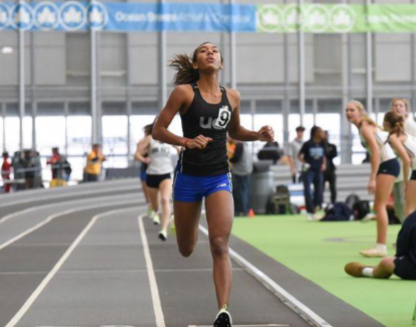Huge crowds filled the open lots of Warner Brothers Studios, where Elon Musk entertained many of his curious and excited fans with Tesla’s shiny new prototypes during his “We, Robot” event in early October. It was no surprise to his enthusiastic spectators, who watched in awe in person and online that he would present more sleek and flashy vehicles. Elon brought to life the futuristic Cybercab, the Robovan, and the mighty Optimus, his humanoid, AI-powered line of robots, which all looked like something from a movie screen. Many attendees got their lucky chance to ride into the future with the Cybercabs or Robovans and chat and have drinks with the Optimus bots during a vibrant and lively after-party.
Elon’s will and determination can advance the limits of technology and build a better future at lightning speed, as made evident through this event. The modern wonders of the Cybercab and Robovan will transform streets for the better by making transportation cheaper, sustainable, and most likely simplifying life. The astounding Optimus bots will function as assistants in manufacturing and at home. “It’ll basically do anything you want,” Elon said during the event. “It can be a teacher, babysit your kids, walk your dog, mow your lawn, get the groceries, [or] be your friend.” Through these forward-thinking inventions, it is clear that Elon is ahead of his time.
Both vehicles had innovative designs that shocked the crowd during the “We, Robot” event. The Cybercab and the Robovan are electric vehicles that can be charged wirelessly. The Cybercab will be a 2-passenger car made of stainless steel and will have butterfly doors but no rear window or side-view mirrors. It will also be able to clean up any mess left inside the car, a great feature that any germophobe will appreciate. The Robovan will have a golden exterior with stripes around its body for signal lights, and the inside will be spacious with tinted windows and seats that can accommodate up to 20 people. Most importantly, the Ropbovan will not have steering wheels or pedals, as Elon plans to advance self-driving to another level. “We’ll move from supervised full self-driving to unsupervised self-driving,” Elon said about the Cybercab. “You could fall asleep and wake up at your destination.”
This is not the only time Elon Musk has wowed crowds with his technologies, especially in his other company, SpaceX. He created SpaceX in 2002 to revolutionize space travel and make it more affordable for everyone. Musk has made huge strides in space technology and has even worked with NASA on many projects. One of SpaceX’s most recent accomplishments took place just a few days after the “We, Robot” event. In Boca Chica, Texas, a rocket booster for SpaceX’s Starship could return to the launch tower after takeoff, saving precious materials compared to dumping the booster in the ocean.
However, reactions toward the “We, Robot” event were mixed. Some people were excited to see these new prototypes, especially the large Robovan design, while others felt disappointed that Elon did not reveal enough during his speech. People wanted to know about design flaws, especially after numerous recalls for Tesla’s recent vehicle, the Cybertruck. One Union Catholic student, Gavin Rysinski, is not as enthusiastic about these prototypes. “I am excited about Elon Musk’s innovations, but I don’t like how fast it’s going,” Gavin says. “AI-powered robots might be a bad idea, especially because they’re new, and fully self-driving vehicles are not very safe on the roads.” It is clear that Elon Musk has a lot of pressure on him to design flawless technologies, but if he succeeds, it will be a high-tech future that will be out of this world.













